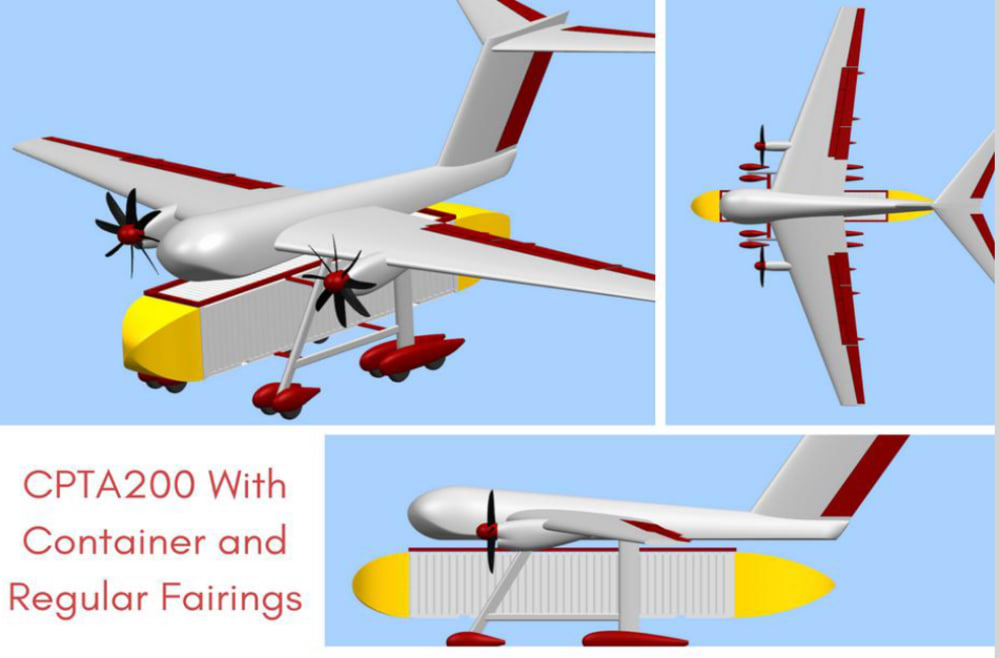CPTA family of aircraft has two branches: conventional take-off and landing (CTOL) and eXtreme short take-off and landing (XSTOL). The XSTOL variant has two sub-variants: the two-engine medium-lift, 100,000lb GTOW (featured on website), and a four-engine heavy-lift, 200,000lb GTOW (not featured on website). The traditional fuselage is eliminated with its weight reallocated to the payload. Both XSTOL sub-variants employ an optional parawing that is deployed as required. Both XSTOL aircraft, with their >5 to 1 lift ratio vs. traditional 1 to 1, are intended to provide tactical airlift for payloads and combat vehicles too heavy for all known helicopters, and with its multiple fixed landing-gear options from which to choose, to operate into an out of short rough field conditions that would otherwise be unsuitable for traditional transport aircraft such as the C-130 and C-17. Very important is its superior lift ratio that translates into significantly reduced fuel consumption, up to 50% less per payload ton-mile.
These aircraft offer two different 'payload interface systems'. First is a 'top-lift' system designed specifically for handling ISO intermodal shipping-containers with drive-thru trucks delivering or picking up said containers. The additional payload interface system is a 'drop-down' cargo-deck for the rapid roll-on/roll-off (ro/ro) loading and unloading of all other types of payload packages. These XSTOL CPTA aircraft fill the medium and heavy tactical airlift capability gap that exists with currently employed DoD military airlift assets. CTOL variants operate pretty much the same as any traditional configuration would but have the CPTA's same lift ratio and corresponding reduced fuel consumption. Because these aircraft have far fewer parts than corresponding traditional transport aircraft, they will costs much less to design, certify, produce, operate, maintain, replace and insure. XSTOL variants will be able to operate off of the deck of an aircraft carrier. Not possible for C-130s or C-17s. In addition to multiple cross-service defense requirements, they also have wide ranging commercial, civil and humanitarian applications.
All of our data and performance estimates are based on rigorous engineering analysis available for review, and by reducing the concept to practice in the form of the successful testing of small sub-scale concept demonstration prototypes. Flight test video is available on our website http://transairsystems.com/convertible-payload-transport/index.html. These aircraft will handle more different payloads and deliver them to more different destinations. Because these aircraft offer so many new and unprecedented logistical capabilities, we refer to them as the 'Swiss Army Knife' of transport aircraft. At this point in time, we would care to start with the four-engine variant as its lift capacity will be sufficient enough to lift all DoD combat ground vehicles, to include the M1A Abrams tank. These aircraft may also be referred to as 'flying pod-carriers' or 'flying straddle-carriers".
Because Trans Air Systems is a design firm, we will need to partner with a legacy aerospace defense contractor in order to see this program put into action; and DoD support, as is warranted by the unprecedented and desirable aeronautical capabilities that CPTA platforms provide.
Like this entry?
-
About the Entrant
- Name:Thomas Mcnally
- Type of entry:individual
- Patent status:pending








